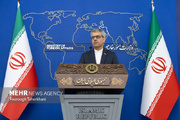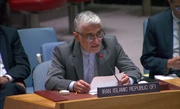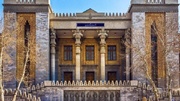Introducing the great pioneers in the history of the medical sciences in
Dr. Ahmadieh was one of the great Iranian physicians. His endeavors to preserve the pillars of traditional medicine established his name in the history of medical sciences in
Dr. Abdullah Khan Ahmadieh, who earned the title “Hakim Ahmadieh” for his considerable knowledge and research, was born in Amol, Mazandaran Province, in 1265 (1886). He lived in Amol during his childhood and received primary education in the schools of the time, which were called maktabs. Amir Mokaram, the then governor of Mazandaran, invited the late Sehhat-ul-Molk to Amol to educate his own son, and having heard of the genius Abdullah, suggested that Sehhat-ul-Molk educate him as well. Due to the considerable intelligence of young Abdullah, Sehhat-ul-Molk took him to
After finishing his secondary education, Abdullah Ahmadieh went to the Medical School of Dar-ul Fonoun to continue his studies. In those days, medicine was taught at the Medical School of Dar-ul Fonouon by Iranian physicians such as Dr. Hakim Azam and Dr. Amir Alam as well as some French physicians such as Professor Gualet, Professor Guachet, Professor Muller, and Professor Georges.
Abdullah Ahmadieh received an M.D. in 1294 (1915), and began working in hospitals during his internship. He received his first official post at the
He then began to teach medical natural history, parasitology, and biology at the medical school and made a great number of scientific achievements. He was then appointed to be the director of the
In 1314 (1925-1926), he went to
During his 44 years of practicing medicine and through direct contact with his patients, Dr. Ahmadieh left a valuable legacy for his own and future generations. His method of dealing with patients and his research truly warrant a separate essay. He would never refuse any patient and would not charge a fixed fee. There was a box in his office in which people who could afford to pay would deposit money. However, other patients who could not afford to pay would also be given free medicine, coal coupons, and even cash.
The diaries of Dr. Ahmadieh, as well as his boundless enthusiasm about learning, should be the model of all research physicians. Dr. Ahmadieh had friendly relations with his patients, and his physical checkups were contrastive, experimental, and clinical.
The fact that he recorded the exact date of the examinations of specific patients, their names, their occupations, and even the dosage of medicines prescribed to them, and his perseverance in treating patients completely gave him a special status among physicians of the past 300 years.
Through his three-volume book “The Secret of Treatment” and some other writings that hopefully will be published in the near future, Dr. Ahmadi saved the ancient traditional medical sciences of Iran from being forgotten, and using modern medical equipment and his own wisdom, preserved the dignity of traditional medicine.
The name of Abdullah Ahmadieh will be immortal in the medical history of
Dr. Ahmadieh passed away on
(To Be Continued)
SA/HG
End
MNA
























Your Comment